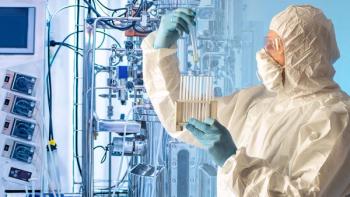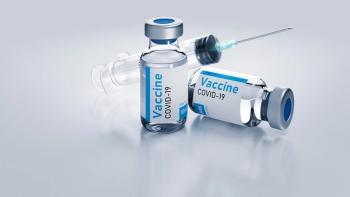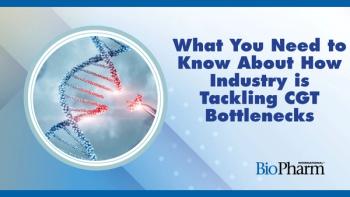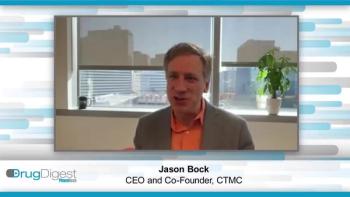
- BioPharm International-05-01-2019
- Volume 32
- Issue 5
Challenges with Successful Commercialization of Biosimilars
This article presents some key differences between the US and European regulation of biosimilars, including naming conventions and pharmacovigilance of biosimilars, and the impact of biosimilars on commercialization and affordability of biotherapeutics.
Commercialization rights for novel therapeutic products are protected for a finite period by patents and other measures. After expiration of patents and other exclusivity rights, other manufacturers are allowed to make copies of these products, referred to as generics in the case of small-molecule pharmaceuticals and biosimilars in the case of biopharmaceuticals (1). Biosimilars are biological products that are highly similar to and have no clinically meaningful differences from an existing approved reference product (1). They offer improved affordability and are thus expected to have major impact on accessibility of biotherapeutics, including in developing and emerging economies. The global market value of biosimilars is expected to reach $36 billion by 2020 (2).
Biosimilars are defined by the European Medicines Agency (EMA) as biological medicines that are highly similar to another already approved biological medicine (the ‘reference medicine’) (3). They are approved according to the same standards of pharmaceutical quality, safety, and efficacy that apply to all biological medicines. There are some key differences between the production of biosimilars and that of the traditional small-molecule generics. Capital investments, as well as operating costs associated with manufacturing of biosimilars, are significantly higher than that for small-molecule generics, along with the associated risk of failure. The heterogeneities are a result of the size and complexity of the molecules themselves, as well as activities in the host cell that is used to express the product, the bioreactor conditions under which the cells are grown, and the purification process utilized for generating the final product.
The correlations between the clinical safety and efficacy of a biologic product and its product quality attributes are generally quite well known, however with residual uncertainty. The regulatory process is designed to address this residual uncertainty (4). In both the United States and Europe, limited clinical data have been required so as to enable evaluation of safety and efficacy of the biosimilar drug in comparison to the original drug. EMA, for ethical reasons, is exploring ways to reduce the clinical testing to a minimum to avoid extensive and thereby expensive clinical trials.
The success of biosimilars has been somewhat muted, in particular in the United States, though certainly picking up with time. The reasons for this are several including the complexity of biopharmaceutical processes and products as well as the inherent heterogeneity of these products, which makes it difficult if not impossible to maintain identical purity even by the innovator itself. For this reason, both in the US and in Europe, new regulatory pathways have been developed for the assessment of copies of biological medicines after expiration of market exclusivity (1). Europe has been a leader in creating the regulatory framework for approval of biosimilars, and as a result, more than 50 biosimilars of 15 innovator biotherapeutics have been approved by the EU as of April 2019 (3). This is a sharp contrast with the US, where only 17 biosimilar products related to nine innovator biotherapeutics have been approved and only 10 were available on the market at the time of writing (5).
In this 42nd article in the Elements of Biopharmaceutical Production, the authors present a perspective on challenges with Âsuccessful Âcommercialization of biosimilars. Aspects that have been explored include common principles in biosimilar development and assessment, key differences between the US and EU regulations, and the role of pharmacovigilance in biosimilars.
Development and characterization of biosimilars
The design of a biosimilar is mostly an art of reversed engineering (6). A biosimilar company may purchase 10–20 different batches of the product they seek to copy and perform an analytical characterization exercise. The number of batches used needs to be justified to the regulator. Table I illustrates a selection of attributes that are often examined as well as the numerous analytical techniques used in the assessment (4).
The biosimilar manufacturer attempts to define the critical quality attributes (CQA) that are responsible for mode(s) of action on one side but also for side effects (like immunogenicity) on the other. In addition, the variability in the CQA between batches of the reference product is defined, as the biosimilar is required to stay within these boundaries. According to FDA, “although the scope of ICH [International Council for Harmonization] Q5E is limited to an assessment of the comparability of a biological product before and after a manufacturing process change made by the same manufacturer, certain general scientific principles described in ICH Q5E are applicable to an assessment of biosimilarity between a proposed product and its reference product. However, demonstrating that a proposed product is biosimilar to an FDA-licensed reference product manufactured by a different manufacturer typically will be more complex and will likely require more extensive and comprehensive data than assessing the comparability of a product before and after a manufacturing process change made by the product’s sponsor. A manufacturer that modifies its own manufacturing process has extensive knowledge and information about the product and the existing Âprocess, including established controls and acceptance parameters. By contrast, the manufacturer of a proposed product will likely have a different manufacturing process (e.g., different cell line, raw materials, equipment, processes, process controls, acceptance criteria) from that of the reference product and no direct knowledge of the manufacturing process for the reference product” (1).
Subsequently, the amino-acid sequence is cloned in a suitable producer cell and then the tedious work of selecting such a clone of cells that produce as close as possible the reference product and also in commercially viable quantities (7). Once the cell line has been chosen, the cell culture process followed by the purification process and the formulation are developed. The expressed or secreted biosimilar candidate is exhaustively scrutinized for resemblance to the reference product using a variety of sophisticated chemical, physical, and pharmacological techniques as illustrated in Table I. Once close resemblance has been established, a minimum of three clinical batches are produced under GMP-conditions suitable for starting the clinical pharmacological testing program. This program starts with a Phase I pharmacokinetic (PK), and whenever possible pharmacodynamic (PD) trial in human volunteers or patients to assess similarity with respect to exposure to the different preparations. The reason for this is that for several reference products there are geographically different manufacturing sites, and small differences between EU and US reference products have been observed (such as for etanercept and infliximab).
Once the results from preclinical studies have shown that the biosimilar candidate has completed all requirements for the similarity exercise, it is common practice to perform a Phase III trial in patients. However, this is not a strict requirement for the EU. One of the first approved Âbiosimilars-a biosimilar of a granulocyte Âcolony-stimulating factor from Sandoz (Zarzio, approved in EU in 2008)-was not tested in patients, but only Âunderwent extensive PK/PD trials in human volunteers (8).
The conditions for the pivotal biosimilar trial deserve special Âconsideration. The objective for this study is not to prove safety and Âefficacy but rather demonstrate absence of clinically meaningful differences as compared to the reference product. This has important consequences for the choice of patients and indications and the choice of endpoints. The choice has to be based on scientific advice from regulatory agencies to maximize the chance of finding any clinically relevant difference. For TNF-alfa inhibitors, for instance, psoriasis is a sensitive indication with a relatively clear endpoint (with mean PASI change as readout). Alternatively, rheumatoid arthritis is a good disease model, with the ACR-20 the most sensitive indication. And here a second principle of biosimilar development is eminent, that of indication extrapolation. The scientific justification of extrapolation is based on the similar mechanism of action, target/receptor interactions, and molecular signaling; product structure interactions with the target or receptor; PK, expected toxicities; and information based on mechanism of action. All of these factors are examined in the biosimilar application. Any differences in these factors can be addressed in the context of the totality of the evidence supporting a demonstration of biosimilarity. The principle of extrapolation can result in substantial cost-savings in the development of biosimilars.
Once the clinical studies have been completed, the marketing license application is submitted to the regulatory agency. In Europe, it takes an average of 12–13 months to obtain a positive recommendation from the Committee for Medicinal Products for Human Use (CHMP), the body that advises the EU commission on market approval. The approval process is quite transparent, and after approval, EMA publishes a European Public Assessment Report (EPAR) that includes all the details of the scientific assessment. If there are residual uncertainties, these are incorporated in the post-marketing surveillance program imposed by the regulator. Once regulatory approval has been received and market exclusivity of the reference product has expired, the products become available for use by patients. In most EU countries, there is no hurdle for biosimilars to obtain full reimbursement (or with a small co-payment), and so patients have quick access to the licensed more cost-effective alternative.
The US Biologics Price Competition and Innovation Act (BPCI Act) of 2009 provided an abbreviated pathway for FDA approval of a biosimilar product. FDA recommends use of a stepwise approach for the development of biosimilar products: analytical studies, animal studies, clinical PK/PD studies, clinical immunogenicity assessment, and additional clinical studies. At each step, the sponsor should evaluate the level of residual uncertainty about the biosimilarity of the proposed biosimilar product to the reference product and identify the next step to address remaining uncertainty. If there is a residual uncertainty about biosimilarity after conducting structural analyses, functional assays, animal testing, human PK and PD studies, and a clinical immunogenicity assessment, then additional clinical data may be needed to adequately address that uncertainty. A clinical study should be designed to investigate whether there are clinically meaningful differences between the biosimilar product and the reference product.
FDA requires US-Reference Listed Drug (RLD) for comparability studies-analytical, clinical PK/PD-to demonstrate biosimilarity. For a PK/PD clinical study, the most sensitive dose to detect and evaluate differences in the PK and PD profiles is suggested. FDA has also established an additional approval classification called an “interchangeable biosimilar”. To achieve this designation, the biosimilar manufacturer must demonstrate that an interchangeable product is expected to produce the same clinical result as the reference product in any given patient. Also, for products administered to a patient more than once, the risk in terms of safety and reduced efficacy of switching back and forth between an interchangeable product and a reference product must have been evaluated. The FDA guidance for the interchangeable biosimilar designation was published in 2017. The consequence of the interchangeable biosimilar designation is that pharmacists in the US would be permitted to automatically substitute the interchangeable biosimilar for the reference product without the prior approval of the prescriber (similar to small molecule generic products). Thus far, none of the biosimilars currently approved in the US have this designation.
Challenges in development and commercialization of biosimilars
The two major concerns with respect to approval and use of biosimilars are the efficacy and safety of the biosimilars in comparison to the original drug. The foundation for establishing this is to demonstrate product comparability (9).
Quality of biotherapeutic products is known to be significantly impacted by the manufacturing process used to produce them as signified by the oft mentioned adage “The Process Defines the Product” (10). A biosimilar manufacturer has to demonstrate their capability to control the process so as to manufacture product of consistent quality (11) and follow it up by a thorough comparison between the biosimilar and the innovator’s product based on extensive analytical examination, stability studies, non-clinical studies (such as receptor-binding studies and cell-based assays), and clinical studies (for pharmacokinetic, pharmacodynamic, and immunogenic behavior) as mentioned previously. In most likelihood, the biosimilar product may differ from the innovator’s product in a subsection of the quality attributes, although it is not allowed to impact on clinical efficacy and safety (12,13, 14).
A key aspect that needs to be understood as well is the relationship between the product and the clinic. Biotech products tend to be complex and subject to potential modifications as listed in Table I. For this reason, all these qualities are scrutinized with advanced analytical techniques.
Role of pharmacovigilance in commercialization of biosimilars
The complexity of biologic molecules and the associated manufacturing processes mean that these products have the potential for immunologic reactions, which could result in a decrease in efficacy (neutralizing antibodies) or adverse reactions (antidrug antibodies). Regulatory pathways employed by EMA and FDA place greater emphasis on findings from analytical assessments and reduce the need for comparative clinical trial data. While this is efficient in bringing biosimilar products to market, it also means that there is limited clinical exposure to the product at the time of market entry. Therefore, it is important that an effective and well-designed post-marketing pharmacovigilance program is in place to detect potential product-related problems that would likely not be observed during the biosimilar development. The example of pure red cell aplasia that occurred with the use of a particular epoetin alfa product in Europe (Eprex, Johnson & Johnson) in the late 1990s and early 2000s demonstrated that small manufacturing changes have the potential to cause clinically significant immunogenic responses (15). While the potential for immunogenic reactions is possible given that there will inherently be small structural differences between the reference product and the biosimilar due to the complexity of the molecules and manufacturing processes, in practice there have not been any significant issues related to immunogenicity reported throughout the experience with biosimilars in Europe (over a decade) or the US.
Approaches to post-marketing pharmacovigilance are often categorized as passive surveillance or active surveillance methods. Passive surveillance is primarily the reliance on spontaneous reports from healthcare workers such as physicians or pharmacists. Passive reporting systems for adverse drug reactions exist in Europe (EudraVigilance, EMA) (16) and in the US (MedWatch, FDA) (17). Active surveillance generally involves examination of databases or patient registries to identify potential adverse events. In both cases, one of the keys to the success of a pharmacovigilance program is to be able to differentiate between similar products produced by different manufacturers (e.g., biosimilars). This has focused attention on the naming conventions that are used to distinguish these products in clinical practice.
Naming conventions
While in Europe, the convention is to use brand names to identify and differentiate products, the situation in the US is quite different. There has been much debate over the preferred method of naming biosimilars in order to both facilitate effective pharmacovigilance and also to encourage the adoption of biosimilars to control costs and improve patient access. Some organizations in the US advocated for the reference product and the biosimilar to share the same US Adopted Name (USAN). The argument was that this would facilitate the adoption of biosimilars and would provide some confidence that the products were in fact expected to produce the same clinical effects. However, in the US there is a high reliance on the use of the USAN and not on brand names in electronic systems. Many argued that sharing a common USAN would not facilitate accurate and effective pharmacovigilance. In order for spontaneous reporting systems and active surveillance systems to be effective, there must be a reliable means of correctly identifying the specific product that the patient received.
To assure pharmacovigilance and also in an attempt to avoid any perception of superiority or inferiority of the reference product and biosimilars, FDA has proposed a naming Âconvention that entails assigning a unique suffix to every biological product. Biologics of the same therapeutic type would share a common “core name”, but biosimilars would have a unique four-character suffix that is “devoid of meaning” or reference to the manufacturer (18). The use of a suffix was preferred because it would still allow products with the same core name to be grouped together in electronic databases and systems for ordering, dispensing, and administering medicines.
There has been concern raised about this approach by FDA. One concern is that the use of distinct names will create the impression that the products may not produce the same clinical effects in patients (19). The second concern is around the use of a suffix that is “devoid of meaning”. The use of a “non-memorable” suffix is expected to make it difficult for patients and healthcare workers to be clear about which specific products that patients are receiving, thereby benefiting the originators. Confusion or ambiguity in the communication of the specific product could lead to inadvertent switching and could actually harm overall pharmacovigilance efforts. One approach to reduce the likelihood of wrong product selection errors in the US would be to include brand names as well as the USAN for biologics into electronic systems and when communicating with patients, as is the case in Europe where the brand name is used as the unique identifier.
Benefiting the patient: Access to biosimilars
European healthcare systems are based on solidarity, which means that there is a collaborative effort to provide patients access to medicines at the lowest possible cost. Each year the European Commission organizes an open forum for all stakeholders to report on the progress of this objective (20). An indirect but significant benefit of biosimilars is that post their introduction, typically the corresponding innovator company also offers Âconsiderable rebates to patients of sometimes 50% or more (21). For some smaller proteins such as short acting filgrastim, the cost has gone down by as much as 80%. It is critical to note that uptake of biosimilars in itself is a naïve parameter, as it overlooks where innovator products have been able to stay in the market at prices similar to those of biosimilars. As a result of the leadership exhibited by the EU, savings for healthcare systems and patients are now billions of Euros each year.
Some countries, such as Denmark, Norway, Poland, and Hungary, have chosen for a centralized top-down decision system to tender for biologics and implement the outcome as the only alternative (22). Across Europe in the more open healthcare systems such as UK, Germany, and The Netherlands, the following are four key factors that in close coherence appear to be critical for acceptance by prescribers and patients of biosimilars as an alternative for the sometimes outrageous expensive reference products (23):
- Multi-stakeholder approach: Get everyone involved, prescribing doctors, pharmacists, supporting staff and hospital management, and third-party payers.
- One voice principle: The whole medical team should be educated to talk the same language to avoid the so-called nocebo-effect (a negative not pharmacology-related negative therapeutic outcome like side-effects or perceived loss of efficacy) (24).
- Shared decision making: Involve the patient in the discussion when medication is being shifted toward a biosimilar, avoid ignorance and confusion (which may again induce a nocebo-effect).
- Gain sharing: Introduction of biosimilars takes time, transitioning patients from innovator product to a biosimilar requires careful instruction, etc., and there should be some benefit for the local healthcare community.
The EU-in collaboration with EMA-has produced information materials to inform healthcare professionals and patients in many languages (25). In several countries, there are local initiatives to support hospitals to educate all stakeholders on the great value biosimilars can have for the access and sustainability of medical care.
Summary
While the EU and the US regulatory systems have so much in common, they are different in their approach toward making biosimilars available to patients. The EU Commission launched initiatives to this end in the early 2000s, and as a result an abundance of available biosimilars and impressive cost-savings for patients has been achieved. Patent litigation, political turmoil, and a profit-driven healthcare system have denied US patients access to the same benefits. Even FDA is appalled by the lack of progress (21). In Europe, there may be 70 biosimilars by 2020, and then a second wave of patent expirations will widen the available armamentarium.
With the biosimilars marketed in Europe and the US, the record of safety and efficacy has been excellent thus far. It can be surmised that so far, the regulatory process has appeared to be robust enough to prevent clinical issues, even across use of biosimilars by millions of patients. This bodes well for the future of biosimilars.
References
1. FDA, Biosimilar and Interchangeable Products, FDA.gov, Updated October 2017, www.fda.gov/Drugs/DevelopmentApprovalProcess/HowDrugsareDevelopedandâApproved/ApprovalApplications/TherapeuticBiologicApplications/Biosimilars/ucm580419.htm#biosimilar, accessed October 16, 2018.
2. Jacoby Rob, Biosimilars: Tapping the Potential of Emerging Markets, Deloitte Blog, Aug. 24, 2015, http://blogs.deloitte.com/centerforhealthsolutions/biosimilars-tapping-the-potential-of-emerging-markets/, Accessed June 21, 2018.
3. EMA, European Public Assessment Reports, EMA.Europa.eu., www.ema.europa.eu/medicines/field_ema_web_categories%253Aname_field/Human/ema_group_types/ema_medicine/field_ema_med_status/authorised-36/ema_medicine_types/field_ema_med_biosimilar/search_api_aggregation_ema_medicine_types/field_ema_med_biosimilar, Accessed 13 February 2019.
4. O. Kwon, et al., Biologicals 48 pp .101-108 (2017).
5. FDA, FDA-Approved Biosimilar Products, FDA.gov, www.fda.gov/drugs/developmentapprovalprocess/howdrugsaredevelopedandapproved/approvalapplications/therapeuticbiologicapplications/biosimilars/ucm580432.htm, accessed July 5, 2018.
6. AG Vulto and OA Jaquez, Rheumatology, 56 (4) pp. iv14-19 (2017). doi:10.1093/rheumatology/kex278
7. SK Singh, D. Kumar, and A.S. Rathore, AAPS, 19 (6) pp.1826-1841 (2017), doi:10.1208/s12248-017-0139-8.
8. GaBI, Comparison of EPARs for G-CSF Biosimilars Approved in Europe, GaBI Journal. Generics And Biosimilar Initiative, Feb. 22, 2013, http://gabi-journal.net/news/comparison-of-epars-for-g-csf-biosimilars-approved-in-europe, accessed June 21, 2018.
9. M. McCamish and G. Woollett, Clinical Pharmacology & Therapeutics, 93 (4) pp. 315–317 (2013). doi:10.1038/clpt.2013.17
10. B. Sharma, Biotechnol. Advances, 25 (3) pp. 325-331 (2007).
11. AJ Chirino and A. Mire-Sluis, Nat Biotechnol, 22 (11) pp.1383-1391 (2004), doi:10.1038/nbt1030
12. N. Nupur et al., MAbs, 10 (1) pp. 143-158 (2018), doi:10.1080/19420862.2017.1402996
13. N. Nupur et al., J Chromatogr B, 1032 pp. 165-171 (2016), doi:10.1016/j.jchromb.2016.05.027
14. A. Covic and MK Kuhlmann, Int Urol Nephrol, 39 (1) (2007), pp.261-266. doi:10.1007/s11255-006-9167-5
15. C.L. Bennett, et al. N Engl J Med. 351 (14) pp. 1403-1408 (2004), doi:10.1056/NEJMoa040528
16. EMA, Pharmacovigilance–EudraVigilance, www.ema.europa.eu, www.ema.europa.eu/ema/index.jsp?curl=pages/regulation/general/general_content_000679.jsp., accessed June 21, 2018.
17. FDA, MedWatch: The FDA Safety Information and Adverse Event Reporting Program, www.fda.gov/Safety/MedWatch/default.htm, accessed June 21, 2018.
18. FDA, Nonproprietary Naming of Biological Products, Guidance for Industry (CDER, 2017).
19. D. Tomaszewski, J Manag Care Spec Pharm, 22 (8) pp. 919-926 (2016), www.jmcp.org/doi/pdf/10.18553/jmcp.2016.22.8.919, Accessed June 21, 2018.
20. European Commission, Internal Market, Industry, Entrepreneurship and SMEs, Fourth Stakeholder Conference on Biosimilars, http://ec.europa.eu/research/health/index.cfm?pg=policy&policyname=global_forum, accessed April 29, 2019.
21. J. Wechsler, “FDA’s Gottlieb Hits Innovators, Insurers for Blocking Biosimilar Uptake,” PharmExec.com, March 8, 2018, www.pharmexec.com/fda-s-gottlieb-hits-innovators-insurers-blocking-biosimilar-uptake.
22. E. Moorkens et al., PLoS ONE, 12 pp.1-17 (2017), https://doi.org/10.1371/journal.pone.0190147
23. V. Razanskaite et al., Journal of Crohn’s and Colitis, 11 pp.690–696 (2017), https://doi.org/10.1093/ecco-jcc/jjw216
24. L.E., Kristensen et al., Biodrugs, 32 pp.397-404 (2018), https://link.springer.com/article/10.1007%2Fs40259-018-0306-1
25. EMA, What I need to know about Biosimilar Medicines–Information for patients, http://ec.europa.eu/DocsRoom/documents/26643, accessed July 5, 2018.
Article Details
BioPharm International
Volumne 32, Number 5
May 2019
Pages: 22–31
Citation
When referring to this article, please cite it as A. Rathore et al., "Challenges with Successful Commercialization of Biosimilars," BioPharm International 32 (5) 2019.
Articles in this issue
over 6 years ago
Optimizing Diaphragm Valves to Improve Bioprocess Reliabilityover 6 years ago
What’s New in Upstream Technologiesover 6 years ago
FDA Faces Challenges After Gottliebover 6 years ago
Bioprocessing Facilities and FDA Inspection Problemsover 6 years ago
The Auditor Vs. Inspector Issueover 6 years ago
New Kit Identifies Endonuclease Impuritiesover 6 years ago
Multichannel Pipettes for 384-Well Platesover 6 years ago
Single-Use for Downstream Chromatography: Benefit or Hindrance?over 6 years ago
Playing the Waiting Game with GMP Guideline RevisionsNewsletter
Stay at the forefront of biopharmaceutical innovation—subscribe to BioPharm International for expert insights on drug development, manufacturing, compliance, and more.





